Abstract
Concurrent variable-interval two-minute and six-minute schedules were arranged while the fixed-ratio changeover requirement was varied among one, two, and four responses. A four-response requirement produced overmatching in the response and time data. A one-response requirement produced consistent undermatching in the time data but mixed results in the response data. The two-response requirement showed undermatching in the time data and overmatching in the response data. The results are discussed in relation to previous research using changeover requirements of five and ten responses, which produced clear tendencies toward overmatching, especially with response data. Taken together, these findings suggest that matching is not a unique result, and that undermatching or overmatching can be produced by continuous variation of the changeover requirements.
Keywords: concurrent schedules, matching, over- and undermatching, fixed-ratio changeover, pigeons
Full text
PDF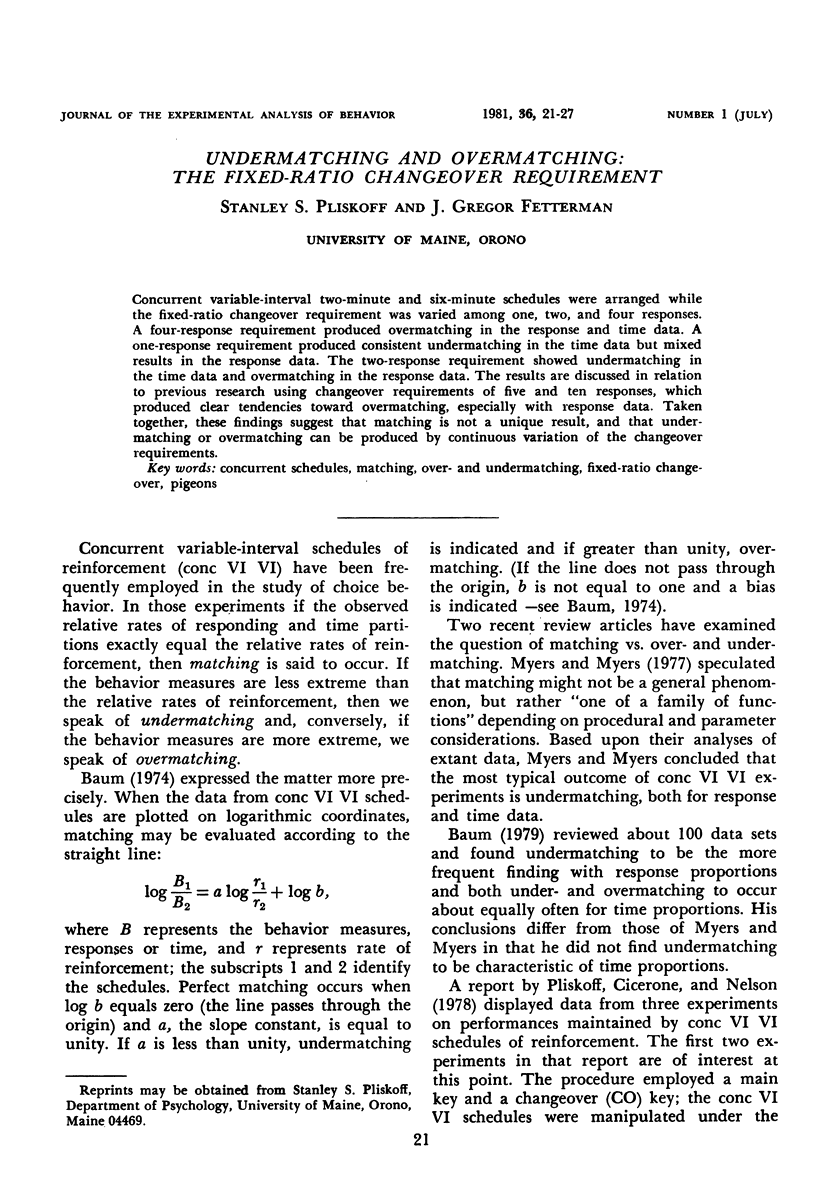
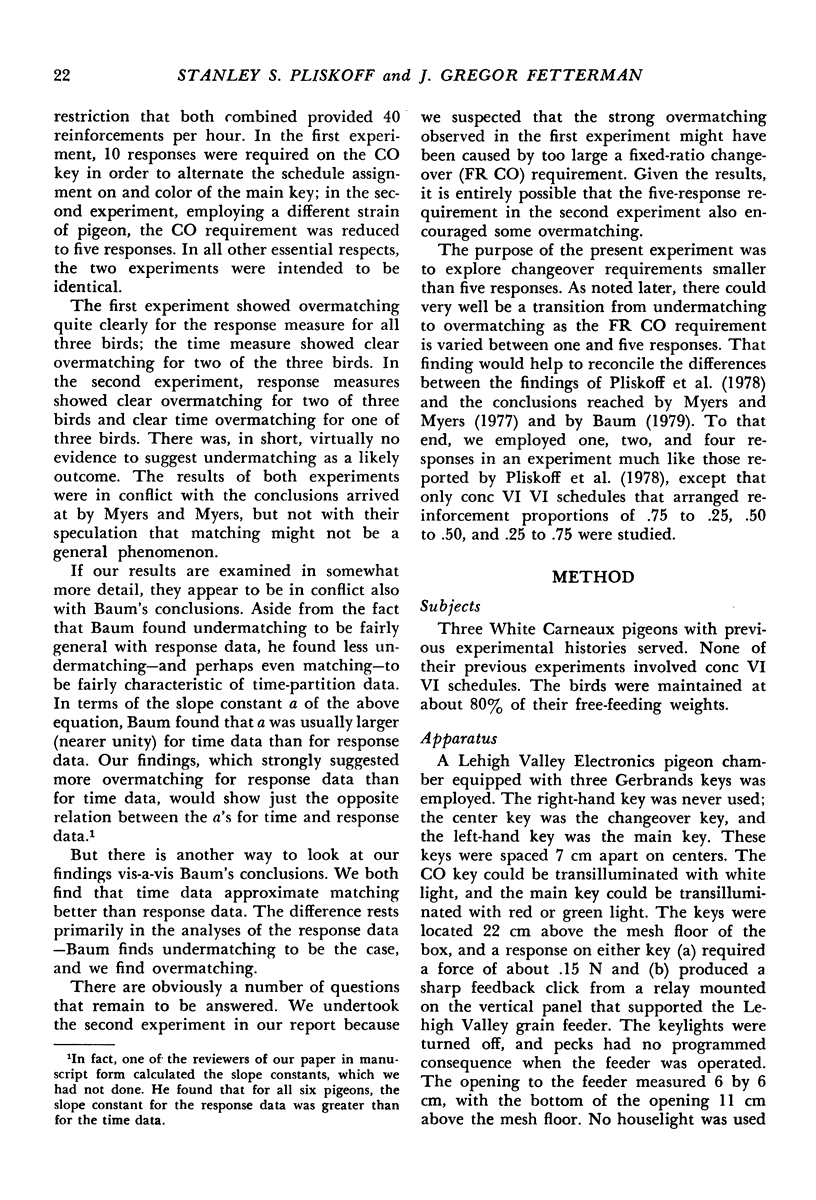
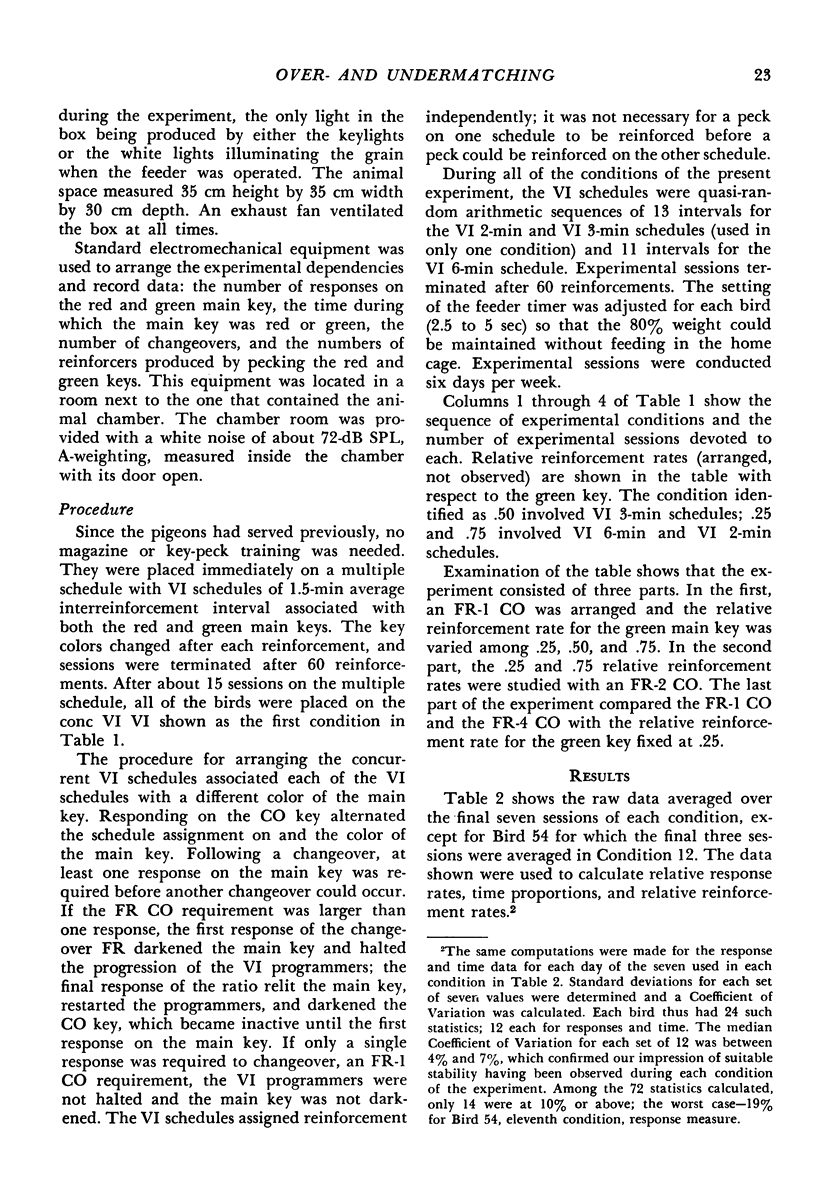
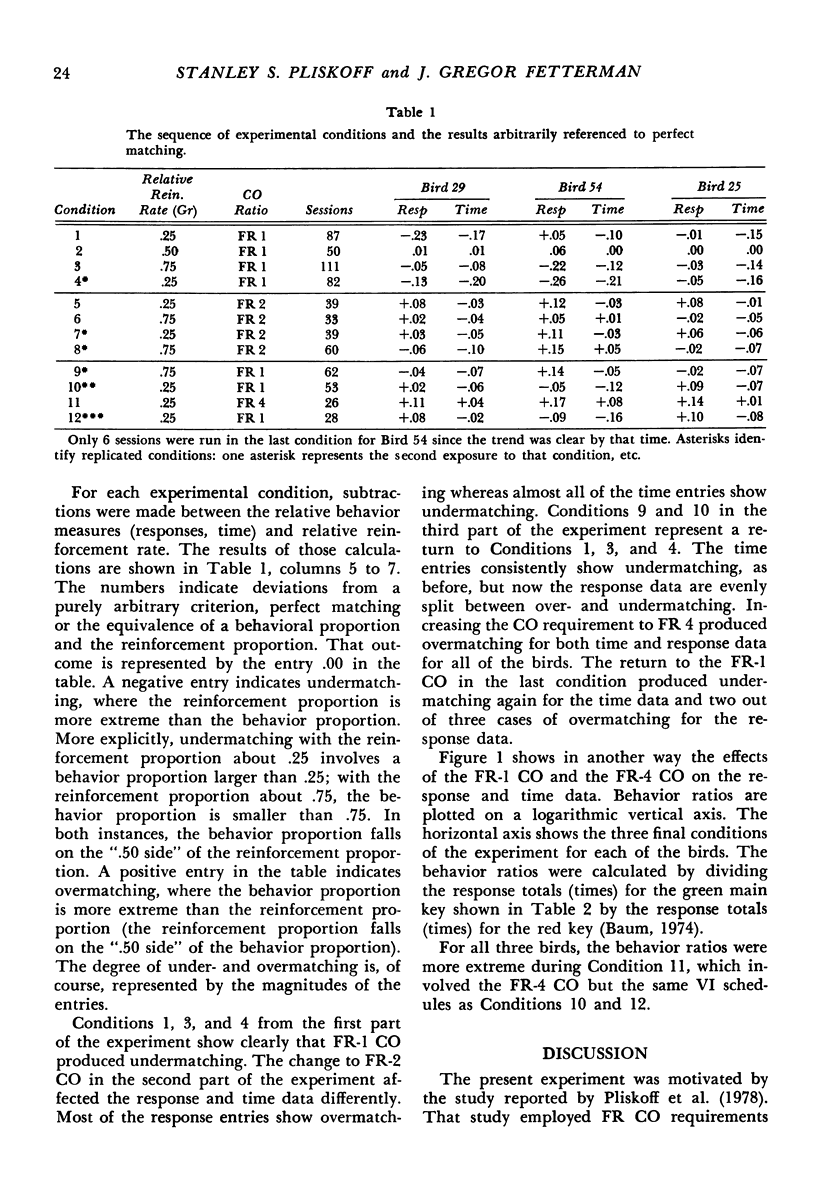
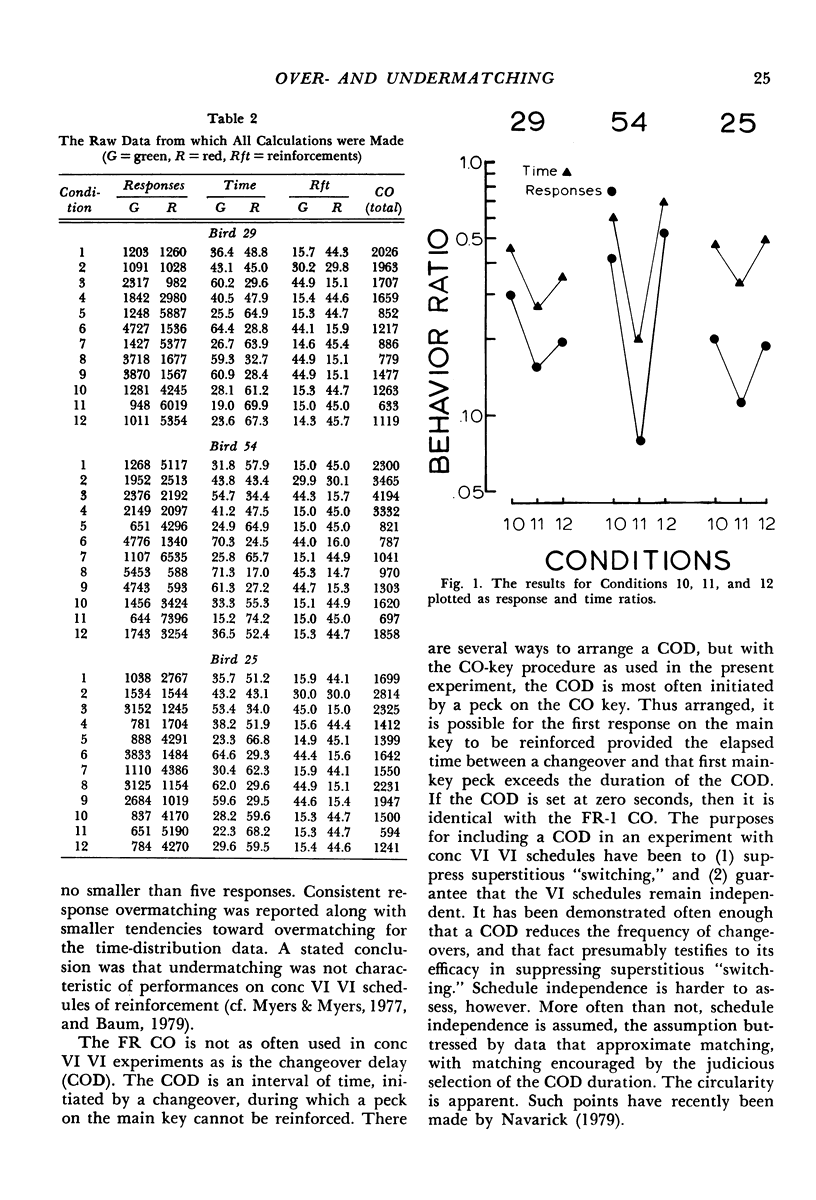
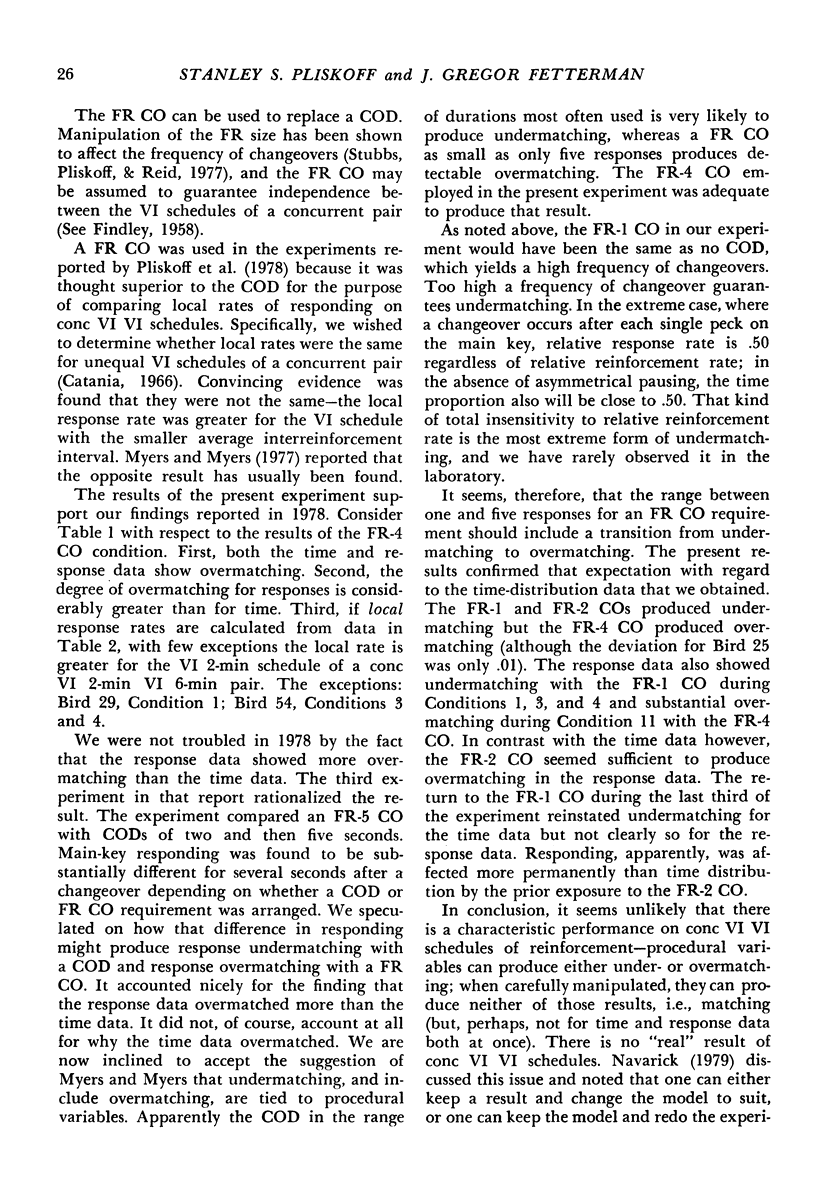
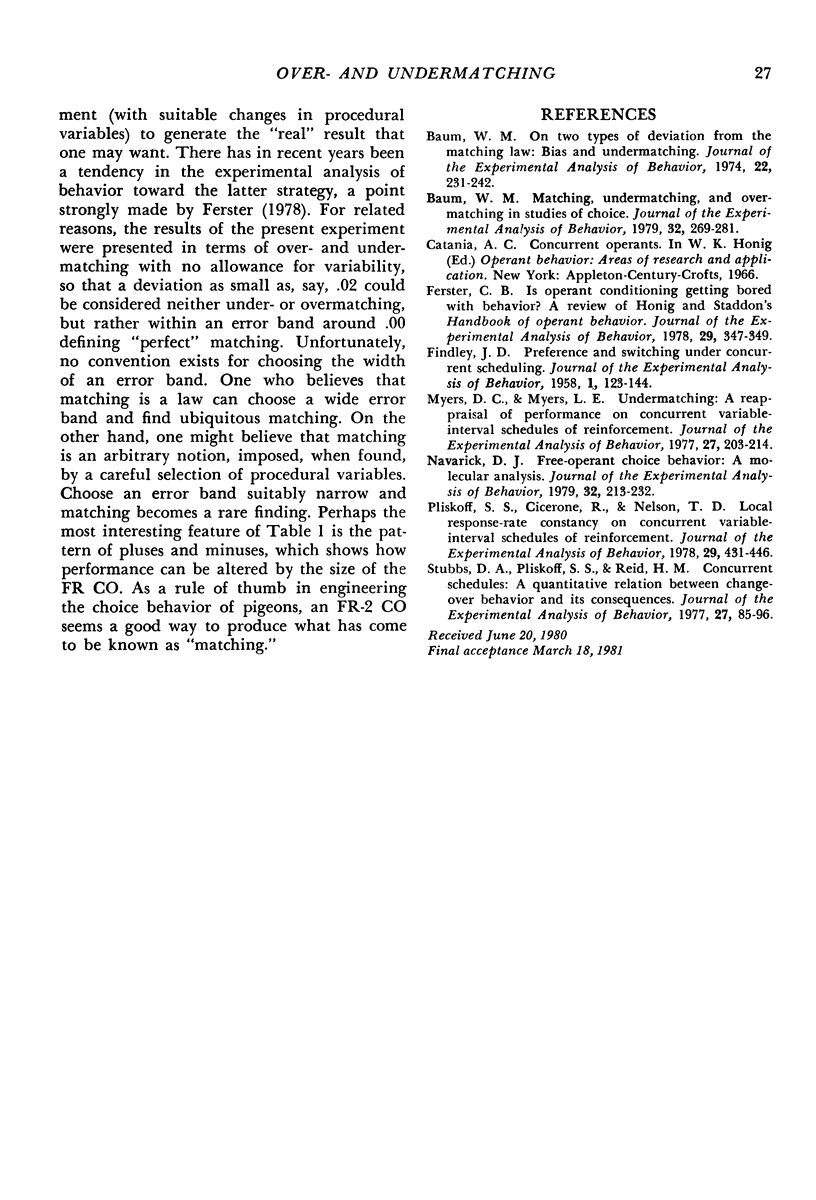
Selected References
These references are in PubMed. This may not be the complete list of references from this article.
- Baum W. M. Matching, undermatching, and overmatching in studies of choice. J Exp Anal Behav. 1979 Sep;32(2):269–281. doi: 10.1901/jeab.1979.32-269. [DOI] [PMC free article] [PubMed] [Google Scholar]
- Baum W. M. On two types of deviation from the matching law: bias and undermatching. J Exp Anal Behav. 1974 Jul;22(1):231–242. doi: 10.1901/jeab.1974.22-231. [DOI] [PMC free article] [PubMed] [Google Scholar]
- Findley J. D. Preference and Switching under Concurrent Scheduling. J Exp Anal Behav. 1958 Apr;1(2):123–144. doi: 10.1901/jeab.1958.1-123. [DOI] [PMC free article] [PubMed] [Google Scholar]
- Myers D. L., Myers L. E. Undermatching: a reappraisal of performance on concurrent variable-interval schedules of reinforcement. J Exp Anal Behav. 1977 Jan;27(1):203–214. doi: 10.1901/jeab.1977.27-203. [DOI] [PMC free article] [PubMed] [Google Scholar]
- Navarick D. J. Free-operant choice behavior: A molecular analysis. J Exp Anal Behav. 1979 Sep;32(2):213–232. doi: 10.1901/jeab.1979.32-213. [DOI] [PMC free article] [PubMed] [Google Scholar]
- doi: 10.1901/jeab.1978.29-347. [DOI] [PMC free article] [Google Scholar]
- Pliskoff S. S., Cicerone R., Nelson T. D. Local response-rate constancy on concurrent variable-interval schedules of reinforcement. J Exp Anal Behav. 1978 May;29(3):431–446. doi: 10.1901/jeab.1978.29-431. [DOI] [PMC free article] [PubMed] [Google Scholar]
- Stubbs D. A., Pliskoff S. S., Reid H. M. Concurrent schedules: a quantitative relation between changeover behavior and its consequences. J Exp Anal Behav. 1977 Jan;27(1):85–96. doi: 10.1901/jeab.1977.27-85. [DOI] [PMC free article] [PubMed] [Google Scholar]


